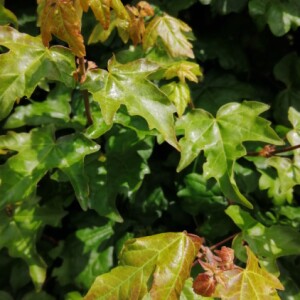Parochial
We live in our own little bubble, don't we. I have only just seen the news about Canadian wildfires: more than 400 burning, more than 250 officially out of control, smoke and dust creating a health hazard in New York - making it briefly the worst city air quality on earth. A wake up message across the sky
Here we talk about gardens affected by lack of rain and the low temperatures. Small beer. ('Small beer' was a real thing in the middle ages. It was made by using the spent grain from a brew of 'normal' beer in a second batch, resulting in a somewhat cloudy and low-alcohol drink, somewhere between 1-3% alcohol, and with some nutritive value from the starch it contains. It was drunk by people of all ages, much as the British now drink tea, for refreshment, rehydration and sociability. It was considered - and indeed it was - a safer drink to give to children than water)
A day off to enjoy the summer. A morning on two wheels - setting off wearing a woollen pullover and winter gloves - but no complaints, in view of the above. I met MrsM and others at another charity open garden. An isolated oasis of horticultural excellence cut from a surrounding expanse of arable farming. No sharply trimmed hedges and manicured paths here, just a riot of exuberant, lovingly-indulged growth - gently guided, but left to express itself in its own way, as far as possible. Everyting bigger, brighter, more fecund, somehow more alive, than you can remember seeing before. And quite a lot of "whatever is that?" - things that you felt you ought to recognise but couldn't quite pin down
I think the owners had a knack for picking slightly unusual cultivars of plants that most of us grow in a more commonplace form - or indeed that grow wild - and planting them in the right place. The main picture is (I think I have deduced) an ornamental variety of wood spurge (Euphorbia amygdaloides). I think the wild version has purely green flowers, without the speck of colour that makes it so eye-catching. Spurge has toxic, skin-irritating sap; it has been used to poison-tip arrowheads, but not lately in Oxfordshire
The first extra is 'just' a delphinium or larkspur, I think (again, I'm open to correction), but an unusual white variant of an alpine delphinium (D. elatum). Between us, we identified delphinium leaves but the flowers made us think of bee orchids! I have no idea if these perform the same function
The second extra is simple field maple (Acer campestre) in a hedge on the ride home, one of our most common, native, hedgerow shrubs. After the wild exuberance of the garden, and the excitement of its unfamiliar forms and colours, it was good to see our familiar friend - with the sun now out and high in the sky (and my jumper in the pannier) - could also put on a show



Comments
Sign in or get an account to comment.


